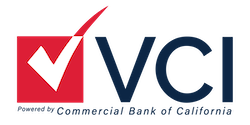
Visa + Mastercard Are Raising Rates: Why Your Business Should Switch to ACH Payments
With Visa and Mastercard recently announcing plans to increase credit card processing fees starting in October and April, many businesses are looking for ways to offset these extra costs. While some may choose to raise prices for consumers, another option is to transition toward more cost-effective methods like ACH payments.
ACH payments, also known as eChecks or bank transfers, offer a host of benefits for both merchants and consumers. When compared to credit card processing, ACH payments are generally less expensive, faster and more secure. Here’s a closer look at why now may be the ideal time for your business to make the switch to ACH (Automated Clearing House).
Lower Transaction Fees
The main reason for businesses to transition to ACH is simple – cost savings. ACH transaction fees are significantly lower than credit card processing fees. While credit card fees range from 1.5% – 3.5% per transaction, ACH fees are usually a flat rate of around $0.25 – $1.00 per transaction. The flat per-transaction pricing of ACH gives merchants predictable costs and makes budgeting much simpler compared to variable percentage-based credit card fees.
For example, on a $100 transaction, a business accepting Visa or Mastercard payments may pay $2 – $3.50 in processing fees. With ACH, that same $100 transaction would only incur $0.25 – $1 in fees. That’s a potential saving of $1.75 – $2.75 per transaction. For a mid-sized business processing 5,000 orders per month averaging $100, that could mean savings of $8,750 – $13,750 each month just from switching to ACH payments.
These savings quickly add up for merchants processing high volumes of payments. By utilizing ACH instead of credit cards, some estimates show merchants could save thousands in processing fees each month. As Visa and Mastercard fees continue to rise, these ACH savings will be even more substantial.
Faster Settlement Times
Another major benefit of ACH payments is faster access to funds through quicker settlement times. While credit card payments can take days to settle, most ACH transactions reach merchant accounts within 1 – 2 business days. The faster settlement speed of ACH payments gives businesses quicker access to capital to reinvest in growth or cover operating expenses.
For example, Visa and Mastercard credit transactions typically settle in 1 – 3 business days. Meanwhile, ACH debit transactions can settle as quickly as 1 business day. Recurring ACH transactions can settle even faster, sometimes within a few hours if utilizing same-day ACH options. This quicker settlement provides businesses with faster access to capital needed to grow their operations.
Enhanced Security
ACH payments also provide stronger security and fraud prevention compared to credit card transactions. They rely on secure bank account numbers and routing numbers instead of credit card details which can be easily stolen. ACH also utilizes NACHA regulations and authentication methods to verify identities and prevent unauthorized transactions.
For example, for recurring ACH payments like subscriptions, businesses can use Telephone and Internet Initiated Entries (TEL and WEB) to obtain authorization from customers. NACHA rules to require a consumer’s identity and consent prior to processing future payments. These strict protocols prevent merchants from fraudulent transactions and chargebacks. Ask your payment processor about strategies for obtaining authorization and validating consumer identities.

Simplified Reconciliation
Transitioning to ACH payments also streamlines the reconciliation process for accounting and bookkeeping. By consolidating transactions to a single payment method, businesses can more easily match payments to invoices and customer accounts. This removes the need to reconcile across multiple credit card merchant accounts.
ACH payments through a single provider also means all transaction details are readily available in one place. Merchants can simply log into their ACH payment dashboard to access real-time reporting on payment history, fees, settlement summaries and more. Less time wasted on reconciliation means more time and resources directed toward core business goals.
Seamless Customer Experience
For consumers, ACH payments provide a smooth and familiar checkout experience similar to entering a credit card number. Customers can securely enter their bank account details just like a credit card payment form. Many ACH processors even allow customers to store these details for future one-click checkouts.
ACH also gives customers more control over when and how payments are processed. Subscription businesses can send email notifications before pulling any recurring ACH payments, allowing customers to review or update details. This convenience and transparency improve customer retention and satisfaction.
How to Make the Switch to ACH Payments
If your business is ready to transition toward ACH payments, here are a few steps to guide the process:
- Research ACH processors and select one that fits your business needs in terms of pricing, features, integration options and support. Vet potential providers thoroughly to find the right fit.
- Open a merchant processing account with the ACH provider to access their payment gateway and start accepting ACH transactions. Ensure you understand all contract terms and account requirements.
- Update checkout forms and customer subscription management platforms to collect banking details like account numbers and routing numbers. Make sure changes are seamless for customers.
- Configure your ACH payment gateway to process one-time and recurring payments based on your billing models. Test transactions thoroughly before going live.
- Communicate payment method changes to customers and provide guidance on how to switch their payment information to ACH. Be transparent about the benefits of ACH.
- Run ACH and credit card payments side-by-side during an intro period to ensure a smooth transition. Slowly ramp up ACH volume while monitoring operations.
- Gradually phase out credit card payments for customers as they switch over account details to ACH. Celebrate milestones as ACH utilization increases.
The Time Is Now: Save Money by Switching to ACH
While the idea of overhauling payment processing might seem daunting at first, the long-term benefits of moving to ACH will outweigh the initial growing pains. And with the right ACH partner, the transition can be relatively simple. The time and cost savings will quickly overshadow any temporary hassles.
As rising Visa and Mastercard fees threaten profit margins in 2023 and beyond, transitioning to ACH payments provides merchants an alternative path to lower costs and higher revenues. For customers, ACH maintains the convenience and familiarity of credit card payments while offering enhanced security and control over their money.
Ultimately, the question for merchants is not if they should switch to ACH, but when. With new ACH solutions and technology removing prior barriers, now is the ideal time to make the change before rising fees take an even greater toll. Contact us today to learn how we can help your business modernize payment processing with ACH.
